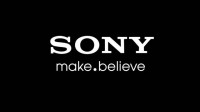Sony Increases 3D Chip Supply to Meet Demand for Phones
January 4, 2019
After receiving interest from Apple and other customers, Sony plans to rev up production of its next-generation 3D sensors, which power front- and rear-facing 3D cameras. Sony sensor division head Satoshi Yoshihara reported that the company accelerated production of the 3D chips in late summer to meet the demand for several smartphones slated to debut in 2019. Although he did not provide production targets, he said Sony’s 3D business is already profitable and will impact earnings for the fiscal year beginning in April.
Bloomberg reports that, “Sony’s bullish outlook for 3D cameras provides much needed optimism to the global smartphone industry, which is suffering a slowdown as consumers find fewer reasons to upgrade devices.” Sony is also now offering software tool kits for developers to “experiment with the chips and create apps that generate models of faces for communication or virtual objects for online shopping.”

“Cameras revolutionized phones, and based on what I’ve seen, I have the same expectation for 3D,” said Yoshihara. “The pace will vary by field, but we’re definitely going to see adoption of 3D. I’m certain of it.”
According to Yoshihara, “there will only be a need for two 3D chips on devices, for the front and back, despite a trend by smartphone makers to have three or more cameras.” Among the examples demonstrated with a custom phone with a 3D rear camera was an app where “the phone calculated the depth of the room and accurately displayed a virtual goldfish swimming in-front of and behind real-life objects.”
“The most important thing in the coming year will be to get people excited,” said Yoshihara.
Sony dominates about half of the camera chip market. According to sources, the company supplies Apple, Alphabet and Samsung Electronics, as well as Huawei Technologies. Its rivals include Lumentum Holdings and STMicroelectronics, but Yoshihara pointed out that Sony technology “differs from the ‘structured light’ approach of existing chips which have limits in terms of accuracy and distance.”
Instead, Sony relies on the ‘time of flight’ method that “sends out invisible laser pulses and measures how long they take to bounce back,” which, said Yoshihara, “creates more detailed 3D models and works at distances of five meters.”
Other uses for the Sony technology “include mobile games, which could involve creating virtual characters that interact with and navigate real-world environments, or ones that use hand gestures for control.” Bloomberg notes, however, that “demand for Sony’s technology is untested and it remains to be seen if consumer interest in 3D will be enough to snap the smartphone market out of its funk.”

No Comments Yet
You can be the first to comment!
Sorry, comments for this entry are closed at this time.